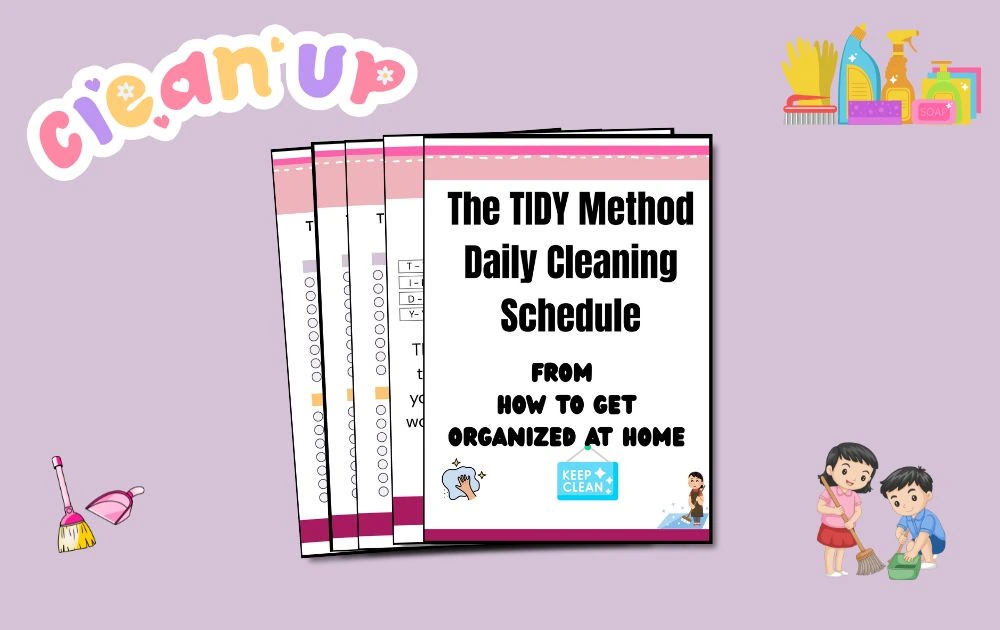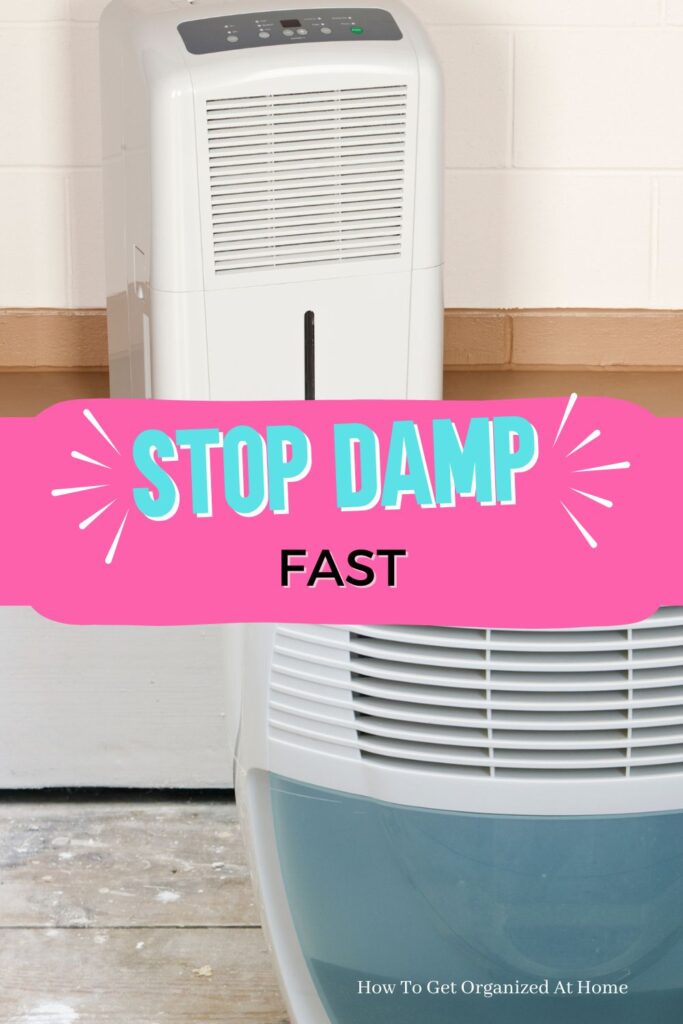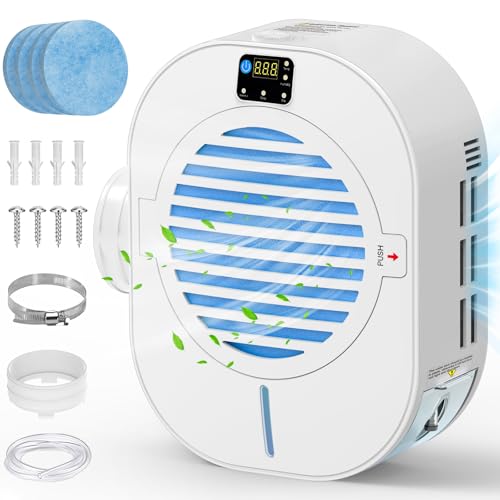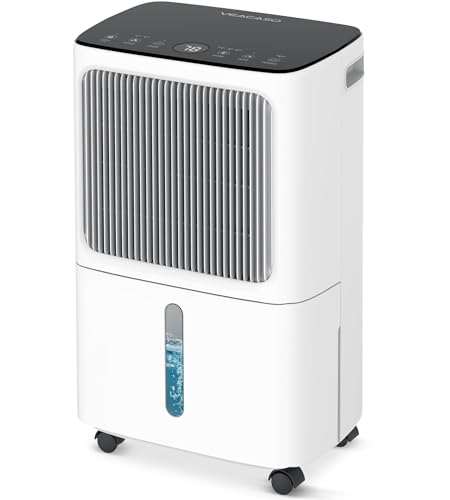

The simple concept of a dehumidifier is to remove the moisture from the air. To answer the question, what does a dehumidifier do? We have to look at the purpose, it pulls the air into the appliance and remove as much water as it can before the air dissipates back into the room, it’s that simple.
What are the benefits of using a dehumidifier:
- to remove excess moisture. This has a number of uses in a home, it can
- help reduce the possibility of mold growing in your home, it can
- reduce condensation and it can even help to
- dry washing inside.
Check out How To Get Organized At Home for more information on keeping your home clean and organized.
It might surprise you, but it can also help in different places in the world to make a room feel more comfortable. Areas of high humidity can be uncomfortable to live in and a dehumidifier can help to make a room more comfortable.
The idea of this article is to show you the practical uses and the common questions I am asked about using a dehumidifier in your home.
Affiliate links are included for your convenience. (This means if you purchase after clicking a link I will earn a small commission which won’t cost you a penny more!) Click here to read my full disclosure and privacy policy.
What Does A Dehumidifier Do?
How a dehumidifier works is simple it pulls the water from the air and traps it. You can buy appliances that do this or you can buy disposable units that collect the water and as soon as they are full you have to relace the whole unit.
The main benefits for using a dehumidifier are simple, it removes moisture from the air and we all know that condensation and moisture can attract mold spores causing more problems. A lot of moisture in a room can also lead to dampness of the walls and any furniture in that room.
This also, means that mold spores can grow rapidly in these environments and make ill health possible.
Why You Might Need A Dehumidifier At Home
Having a dehumidifier at home can have a number of benefits including:
- Drying washing if you don’t have a tumble dryer for the winter
- Remove the potential dampness from a closet or cupboard
- It can also remove excess moisture from kitchens and bathrooms
- A dehumidifier can help dry out conservatories which can suffer from condensation
- Help reduce the humidity of a home
- Help reduce the risk of mold growing in your home
These are all valid reasons for thinking about having a dehumidifier in your home.
Prices pulled from the Amazon Product Advertising API on:
Product prices and availability are accurate as of the date/time indicated and are subject to change. Any price and availability information displayed on [relevant Amazon Site(s), as applicable] at the time of purchase will apply to the purchase of this product.
Dehumidifiers For The Home
Removing the excess moisture from your home is going to help to make maintaining your home easier if there is less excess moisture in your home it can prevent potential problems arising.
Common placement for dehumidifiers for removing moisture are kitchen, bathroom conservatories and basements. By removing excess moisture they reduce the possibility of mold growth and reduce the possibilities of a damp and musty smell in the room.
You can also use a dehumidifier if you dry laundry inside, it can help pull the moisture from the clothes and make drying time shorter and reduce the water being released into the air.
Where To Put A Dehumidifier
The simplest advice for where to put the dehumidifier would be where you have the most moisture.
Say, for example, you have a conservatory that has a lot of condensation on the windows, this would make a great place to have a dehumidifier to remove this excess moisture.
If you want to dry laundry inside a smaller room where the door can be closed would be an ideal drying room as the dehumidifier could concentrate on the water in the clothes rather than generally pulling water from the rest of the house.
You can have multiple dehumidifiers in your home if you have different areas that have the potential to get damp or produce a lot of condensation.
For example:
- Bathroom
- Kitchen
- Closet
- Bedroom
- Conservatory
- basements
What Size Dehumidifier Should I Use?
This will depend on what your aim is and how much you can afford. If you are unsure if a dehumidifier would work in the space you are considering then getting a disposable one can highlight if you do have a problem with excess moisture.
It’s important to read the manufacturers instructions on the size and abilities of the product you are considering. It will give you a guide as to how big of a space the machine can pull moisture from. It’s normally measured meter’s squared.
The size of the water tank matters too. You will have to empty a dehumidifier more often if the tank is small and the humidity is high. The larger the tank the longer you can potentially leave it between emptying.
You can buy dehumidifiers that the water collected can go directly into a drain, this is going to require you to work out the logistics of whether this approach is even feasible for you.
Best Dehumidifiers For A Conservatory
Conservatories, those rooms with lots of glass or plastic tend to create a lot of condensation. This can lead to damp furniture, damaged furniture and even damaged flooring.
I had a conservatory that had a lot of windows and a polycarbonate roof and the dampness was insane. When it was removed there was even a portion of the concrete floor that had started to erode away from the constant dripping of condensation onto the floor.
You want a dehumidifier that is large enough to content with the size of the room, easy to empty and portable. You might not need it in the room all year, just when the dampness is beyond normal.
Check out these dehumidifiers below:
Product prices and availability are accurate as of the date/time indicated and are subject to change. Any price and availability information displayed on [relevant Amazon Site(s), as applicable] at the time of purchase will apply to the purchase of this product.
Prices pulled from the Amazon Product Advertising API on:
Relevant articles:
Best Dehumidifiers For Mold
If you want to prevent mold growth, the aim is to reduce the amount of water in the air and to catch any potential mold spores that are floating around.
A dehumidifier with a HEPA filter is your best option you want to reduce the amount of other particles being released back into the room.
Check out these dehumidifiers:
Are Dehumidifiers Worth It?
You have to way up the cost of not having one and dealing with the excess moisture that can cause other problems including the potential for mold, verses the cost of replacing items that become damp in your home and the risk to your own health.
For me, I had dehumidifiers running 24 seven when I had a polycarbonate roofed conservatory just to keep up with the constant condensation. So, in relation to the next cause of action I took this was relatively cheap.
I decided to remove the polycarbonate roof and put up a solid roof and insulate the room. I also had new windows with air vents in the windows to increase the amount of air flow in the room.
Prices pulled from the Amazon Product Advertising API on:
Product prices and availability are accurate as of the date/time indicated and are subject to change. Any price and availability information displayed on [relevant Amazon Site(s), as applicable] at the time of purchase will apply to the purchase of this product.
I no longer need the dehumidifiers in this room, I solved the problem long-term, but it came with a hefty price tag.
Until I could afford the remodel, the dehumidifiers were worth it, they did catch a lot of the moisture and helped with the care of the items inside of the room. But ultimately, the reason for the high moisture was the room itself and how it was made.
Final Thoughts On Using A Dehumidifier
A dehumidifier can help to reduce the excess moisture in your home. It can help protect the items in your home from dampness and mold growth.
Choosing the right one for the space is important. You need to have an understanding of what they can do and how it’s going to help you and your home.
There is an option on some models not to have a water tank and for the water to drain, if this isn’t an option in your home you are going to have to empty the tank and this could be a danger if you have young children.
In my opinion, I think they are worth it for a number of different situations, but it’s about finding the right one for you and your family.

Managing Your Home
There are so many different areas that require attention when it comes to managing and running a home, here are some more articles that might interest you.





